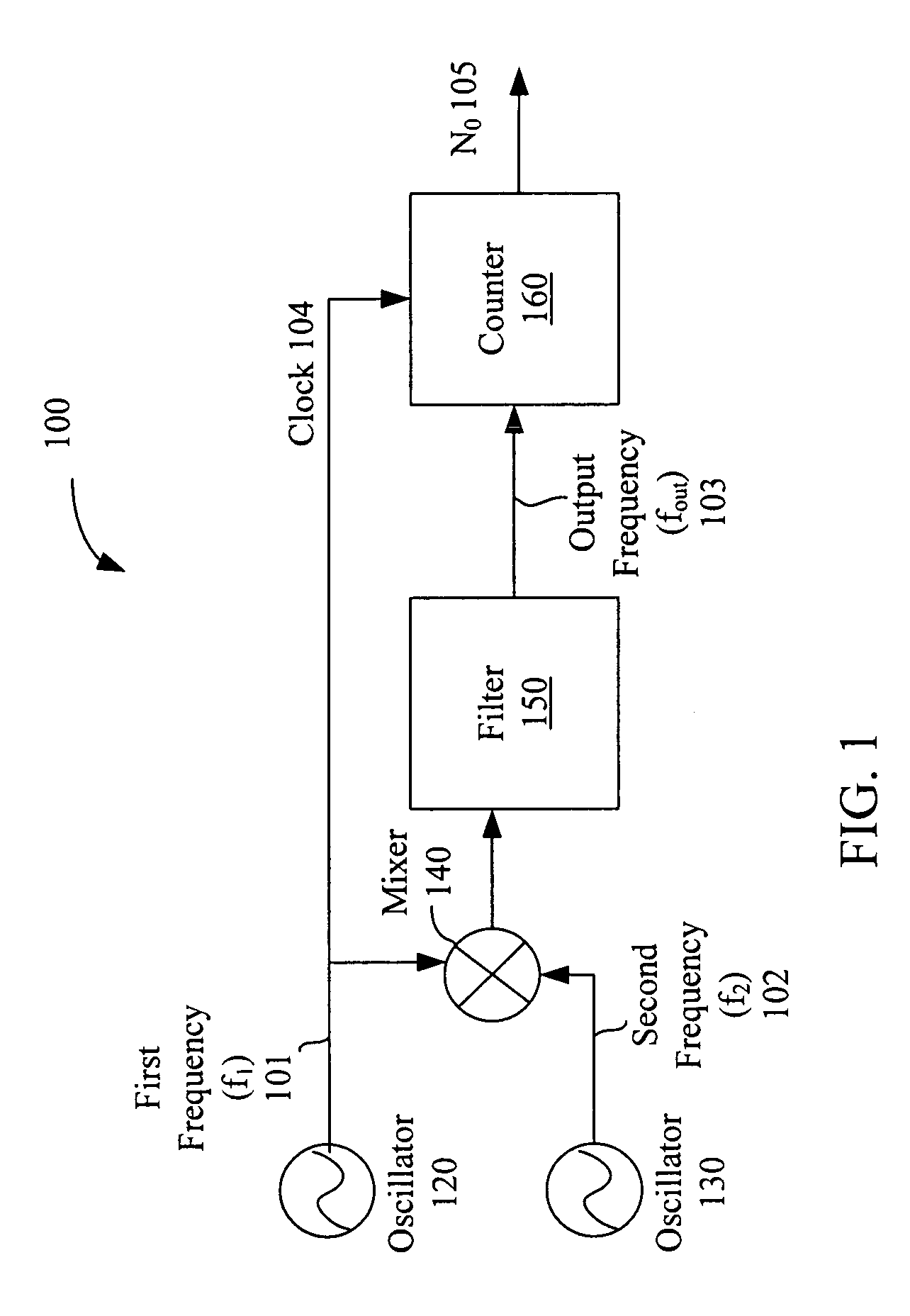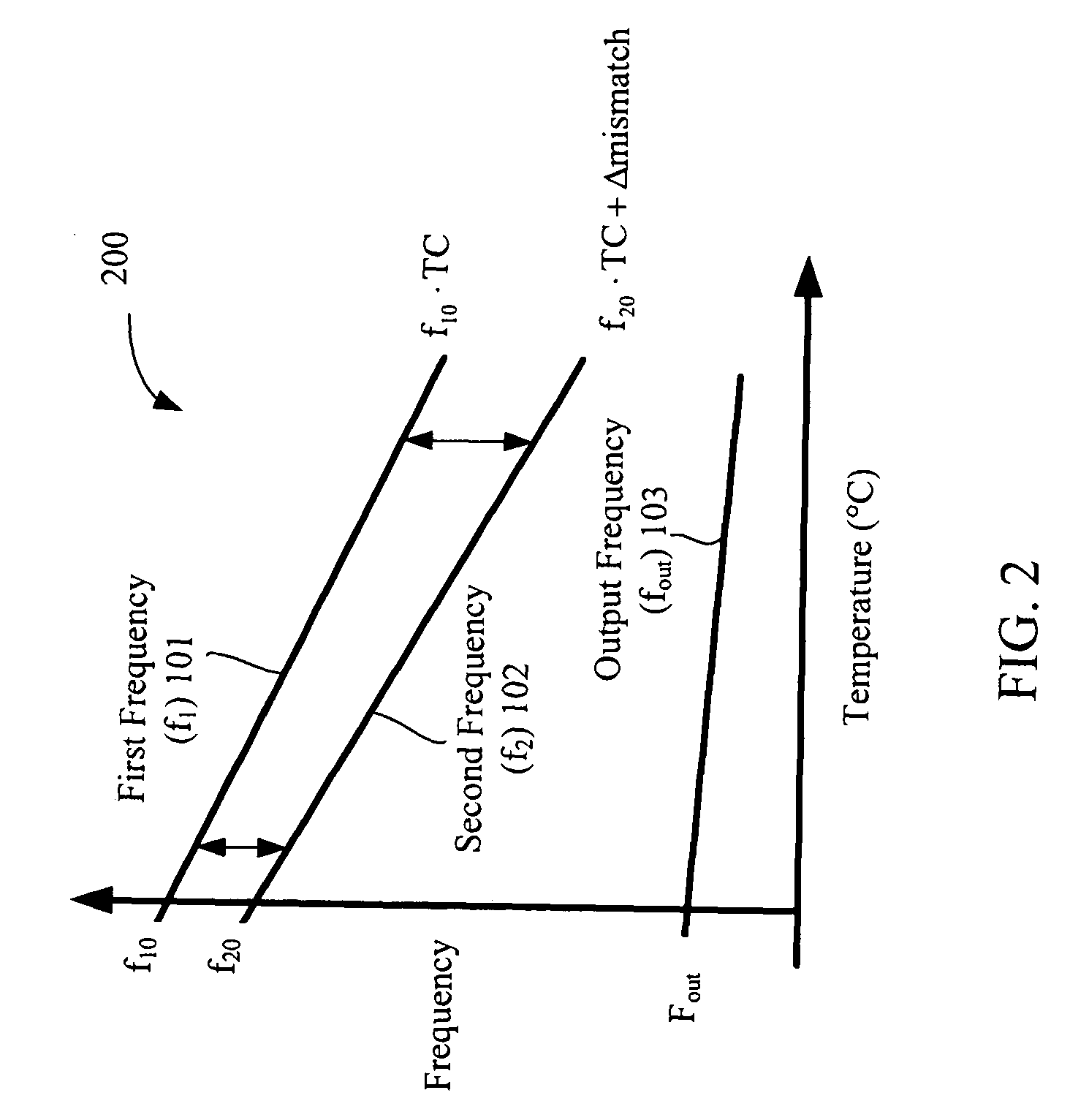Highly accurate temperature stable clock based on differential frequency discrimination of oscillators
a temperature stable clock and oscillator technology, applied in the field of precision timing, can solve the problems of difficult use of compensation techniques developed for quartz crystal oscillators, inability to apply the approach in the context of mems oscillators, and complex process used to fabricate such devices
- Summary
- Abstract
- Description
- Claims
- Application Information
AI Technical Summary
Benefits of technology
Problems solved by technology
Method used
Image
Examples
Embodiment Construction
[0018]Disclosed herein is a differential frequency discriminator. In particular, the embodiments described herein are directed to apparatuses and methods for compensating for a mismatch in temperature coefficients of two oscillator frequencies to match a desired frequency ratio between the two oscillator frequencies over a temperature range. In one embodiment of a temperature sensor, first and second oscillators of different temperature characteristics are coupled to a differential frequency discriminator (DFD) circuit. The DFD circuit compensates for the different characteristics in order to match a frequency difference between the first and second frequencies over a temperature range.
[0019]In the following description, for purposes of explanation, numerous specific details are set forth, such as material compositions and chemical regimes, in order to provide a thorough understanding of the invention. It should be apparent to one skilled in the art that the present invention may be...
PUM
 Login to View More
Login to View More Abstract
Description
Claims
Application Information
 Login to View More
Login to View More - R&D
- Intellectual Property
- Life Sciences
- Materials
- Tech Scout
- Unparalleled Data Quality
- Higher Quality Content
- 60% Fewer Hallucinations
Browse by: Latest US Patents, China's latest patents, Technical Efficacy Thesaurus, Application Domain, Technology Topic, Popular Technical Reports.
© 2025 PatSnap. All rights reserved.Legal|Privacy policy|Modern Slavery Act Transparency Statement|Sitemap|About US| Contact US: help@patsnap.com



